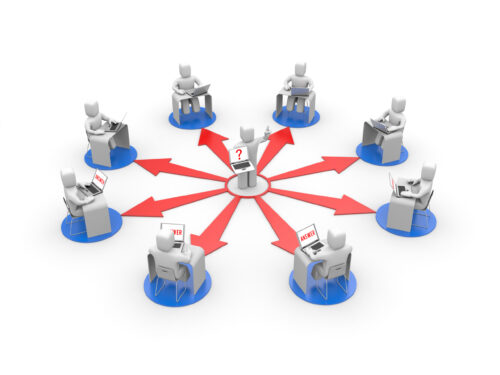5 Reasons to Embrace Instructor-led Training
 Cindi looks at the screen excited to learn something new.
Cindi looks at the screen excited to learn something new.
Her professional license is up for renewal soon. She needs 2 more continuing education credits before the end of the week. Thankfully, there are more online learning options than ever before.
She searches a professional web site and finds a course that looks interesting and fairly priced.
She registers for the course.
A .pdf file downloads.
She reads it…quickly.
Then she takes, and passes, a short quiz delivered online.
A dialogue box displays the following:
“Congratulations Cindi! Please print your certificate for submission as part of your license renewal process. We hope you’ll be back soon for more courses.”
Cindi loves her work. She’s smart. She appreciates the efficiency of online learning because of her busy schedule as a working mother. However, she senses something missing from her experience as she briefly flashes back to past learning experiences …in a classroom.
Of course, not all of her memories are good ones. But as she’s pulled back into reality she makes mental note to book an instructor-led course next time.
The Good, the Bad…and the Good
Have you ever felt that way? Instructor led training has taken a significant beating over the years. And maybe it deserved to be smacked upside the head. At the very least I think we can all agree that there was very little innovation happening in the classroom for a long time.
When computers became “personal” and affordable it didn’t seem like such a bad idea to throw the baby out with the bath water. Creating completely self-paced, computer guided, instruction seemed like a revolutionary solution to what the classroom model had become. And it was. But we may have gone too far.
The good stuff that was tossed out with the bath water is part of today’s evolution of the instructor led training event. Much of it wasn’t consciously designed into the early model but the features were present none the less. These are my 5 reasons classroom training should remain a part of training programs.
The Gathering: The Original Social Network
Being social, and learning collaboratively, was popularized (necessary for survival) long before the technology revolution birthed everything social: Social media, social networking, social learning, etc. Study a little anthropology and you quickly learn the importance of learning in all cultures. It’s not always the case, but throughout time there were buildings or locations designated for sharing and learning from one another, an elder, or subject matter expert: A gathering.
The 20th century version of gathering around the camp fire was the classroom. The 21st century version of the classroom is still a gathering. Consumption of content occurs online so that classroom time not wasted. The instructor role has transformed into facilitator. And instructional designers are optimizing the classroom time into socially interactive experiences appropriate for groups.
The classroom was the original social learning network. And while early attempts at Computer-based training lost much of the benefits of the classroom, new blended models are bringing it back. And it’s better than ever.
Ripe for re-invention
We learned a hard lesson over the last 4 decades. Gathering together to learn socially is important and should remain part of any training solution. We may not call it classroom training, or instructor-led training, but the idea of a small group coming together to learn is valuable and making a comeback.
Attempts at re-invention are already happening in the form of MOOCs and the Flipped Classroom model. Both of which are an attempt at throwing out just the bathwater.
Easy to Produce
Easy may not be the right word. Pulling together an event quickly is easy because much of the organizational processes are already in place. Find an instructor. Schedule a location. Announce the event. Make it happen. In a pinch, the standard ILT model still works. But it’s best to think of it as a short term solution that is the beginning of something better. Use the event as a opportunity to engage with the instructor and attendees. Recording the session gives you digital content that can be repurposed in later versions of the course.
Don’t dismiss the value of going old school. You can meet business needs quickly, and gain valuable feedback. And after recording it you’ll have a valuable base from which to start improving the course.
Everyone Understands the Classroom
Everyone knows the rules of the classroom. There is a certain level of comfort being in an environment that is familiar. And having students in their comfort zone can be a good thing. Because a good learning experience will be pushing and pulling them outside of their personal comfort zone.
Workers also enjoy being taken out of their regular work environment. Performance support proponents have been pushing the idea of embedding learning into the flow of work. But that’s not always possible or optimal. And quite frankly, people enjoy the change of pace and a break in the routine. Even if we could put ALL learning at the site of the work, I’m not sure we should.
Minimal digital media skills required
Designing and organizing an event requires little or no digital media skills. In fact you’re better off having event planning, and basic organizational skills. In many cases much of the work will be delegated to others for scheduling rooms, managing A/V, preparing materials, etc. And with SaaS Learning Management Systems you have the power to manage much of the process yourself.
Have you reinvented your classroom? Tell us about it. We’d love to hear what you’re doing and help you make it better.




